Characterizing Temporal Patterns of Intra-Urban Human Mobility in Bike-Sharing through Trip Analysis: A Case Study of Shanghai, China
Abstract
1. Introduction
2. Study Area, Dataset, and Methods
2.1. Study Area
2.2. Dataset
2.3. Methods
2.3.1. Exploratory Data Analysis
2.3.2. The Continuous Triangular Model
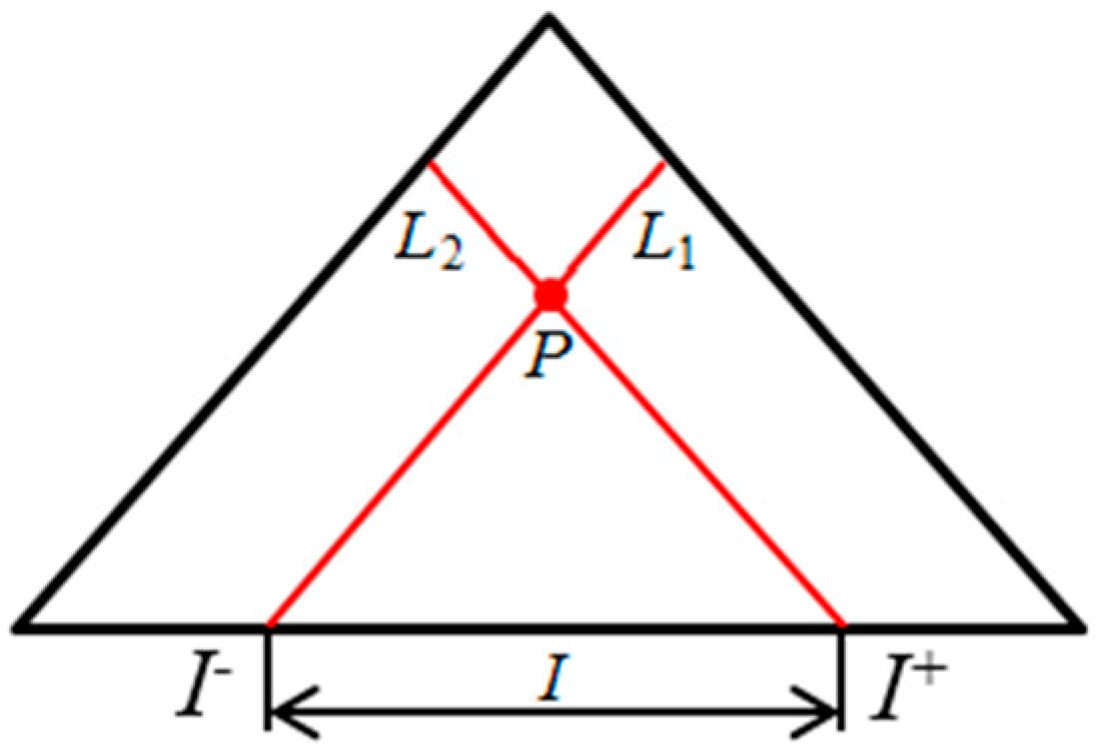
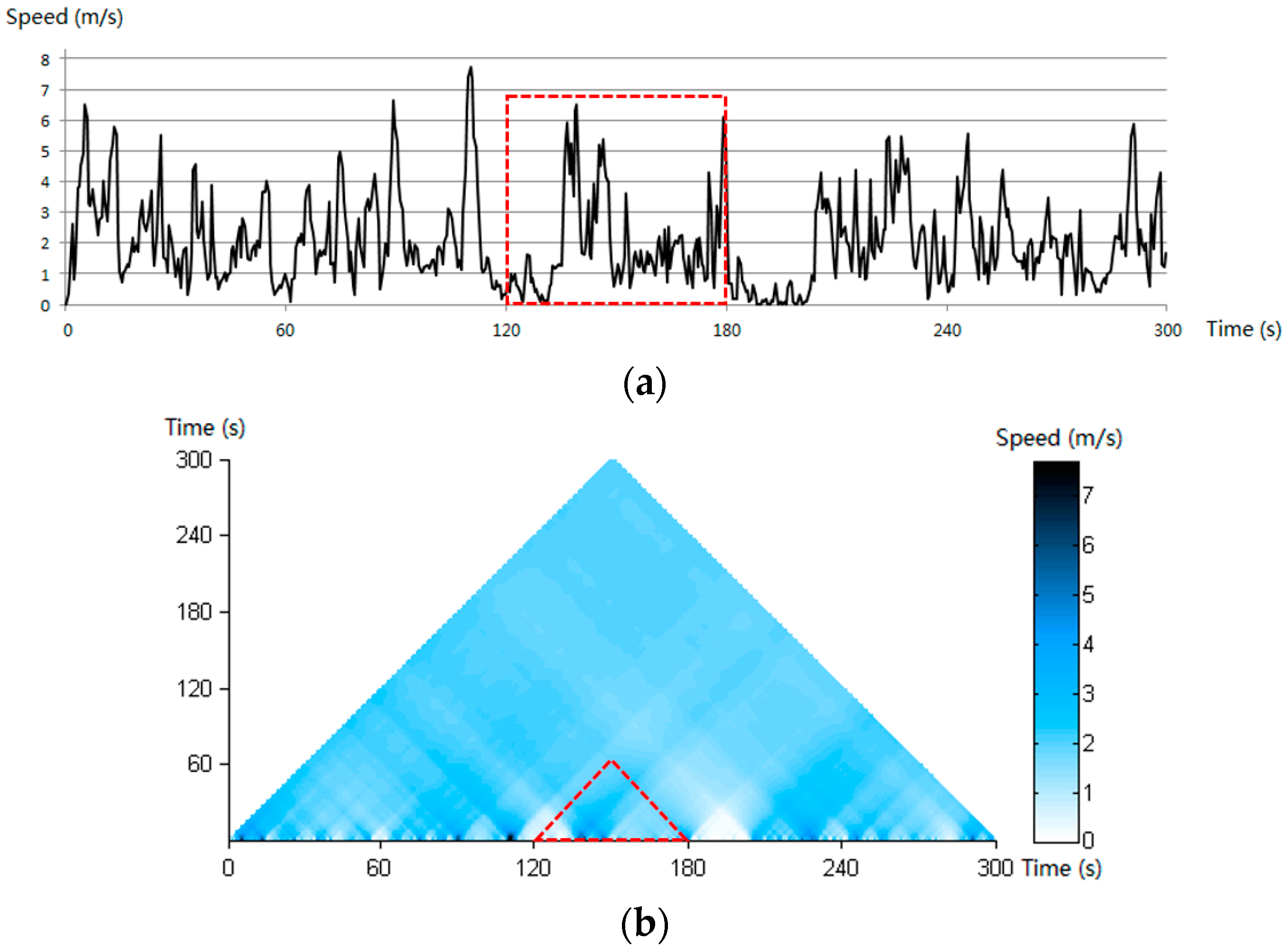
3. Results and Analysis
3.1. The Trip Level
3.1.1. The Trip Numbers
3.1.2. The Trip Durations
3.2. The Bike Level
4. Discussion
5. Conclusions
Author Contributions
Funding
Institutional Review Board Statement
Informed Consent Statement
Data Availability Statement
Acknowledgments
Conflicts of Interest
References
- Li, W.; Wang, S.; Zhang, X.; Jia, Q.; Tian, Y. Understanding intra-urban human mobility through an exploratory spatiotemporal analysis of bike-sharing trajectories. Int. J. Geogr. Inf. Sci. 2020, 34, 2451–2474. [Google Scholar] [CrossRef]
- Tizzoni, M.; Bajardi, P.; Decuyper, A.; Kon Kam King, G.; Schneider, C.M.; Blondel, V.; Smoreda, Z.; Gonzalez, M.C.; Colizza, V. On the use of human mobility proxies for modeling epidemics. PLoS Comput. Biol. 2014, 10, e1003716. [Google Scholar] [CrossRef] [PubMed]
- Gao, F.; Li, S.; Tan, Z.; Liao, S. Visualizing the Spatiotemporal Characteristics of Dockless Bike Sharing Usage in Shenzhen, China. J. Geovis. Spat. Anal. 2022, 6, 12. [Google Scholar] [CrossRef]
- Xin, R.; Ai, T.; Ding, L.; Zhu, R.; Meng, L. Impact of the COVID-19 pandemic on urban human mobility—A multiscale geospatial network analysis using New York bike-sharing data. Cities 2022, 126, 103677. [Google Scholar] [CrossRef]
- Siła-Nowicka, K.; Vandrol, J.; Oshan, T.; Long, J.A.; Demšar, U.; Fotheringham, A.S. Analysis of human mobility patterns from GPS trajectories and contextual information. Int. J. Geogr. Inf. Sci. 2016, 30, 881–906. [Google Scholar] [CrossRef]
- Barbosa, H.; Barthelemy, M.; Ghoshal, G.; James, C.R.; Lenormand, M.; Louail, T.; Menezes, R.; Ramasco, J.J.; Simini, F.; Tomasini, M. Human mobility: Models and applications. Phys. Rep. 2018, 734, 1–74. [Google Scholar] [CrossRef]
- Zhang, P.; Miao, L.; Wang, F.; Li, X. Discovering Geographical Flock Patterns of CO2 Emissions in China Using Trajectory Mining Techniques. Int. J. Environ. Res. Public Health 2023, 20, 4265. [Google Scholar] [CrossRef]
- Li, Y.; Dai, Z.; Zhu, L.; Liu, X. Analysis of Spatial and Temporal Characteristics of Citizens’ Mobility Based on E-Bike GPS Trajectory Data in Tengzhou City, China. Sustainability 2019, 11, 5003. [Google Scholar] [CrossRef]
- Hatzopoulou, M.; Weichenthal, S.; Dugum, H.; Pickett, G.; Miranda-Moreno, L.; Kulka, R.; Andersen, R.; Goldberg, M. The impact of traffic volume, composition, and road geometry on personal air pollution exposures among cyclists in Montreal, Canada. J. Expo. Sci. Environ. Epidemiol. 2013, 23, 46–51. [Google Scholar] [CrossRef]
- Shaheen, S.; Martin, E.; Cohen, A. Public bikesharing and modal shift behavior: A comparative study of early bikesharing systems in North America. Int. J. Transp. 2013, 1, 35–54. [Google Scholar] [CrossRef]
- Du, Y.; Deng, F.; Liao, F. A model framework for discovering the spatio-temporal usage patterns of public free-floating bike-sharing system. Transp. Res. Part C Emerg. Technol. 2019, 103, 39–55. [Google Scholar] [CrossRef]
- Liu, Z.; Jia, X.; Cheng, W. Solving the Last Mile Problem: Ensure the Success of Public Bicycle System in Beijing. Procedia—Soc. Behav. Sci. 2012, 43, 73–78. [Google Scholar] [CrossRef]
- Lathia, N.; Ahmed, S.; Capra, L. Measuring the impact of opening the London shared bicycle scheme to casual users. Transp. Res. Part C Emerg. Technol. 2012, 22, 88–102. [Google Scholar] [CrossRef]
- Apparicio, P.; Carrier, M.; Gelb, J.; Séguin, A.-M.; Kingham, S. Cyclists’ exposure to air pollution and road traffic noise in central city neighbourhoods of Montreal. J. Transp. Geogr. 2016, 57, 63–69. [Google Scholar] [CrossRef]
- Gao, F.; Li, S.; Tan, Z.; Wu, Z.; Zhang, X.; Huang, G.; Huang, Z. Understanding the modifiable areal unit problem in dockless bike sharing usage and exploring the interactive effects of built environment factors. Int. J. Geogr. Inf. Sci. 2021, 35, 1905–1925. [Google Scholar] [CrossRef]
- Gao, F.; Li, S.; Tan, Z.; Zhang, X.; Lai, Z.; Tan, Z. How Is Urban Greenness Spatially Associated with Dockless Bike Sharing Usage on Weekdays, Weekends, and Holidays? ISPRS Int. J. Geo-Inf. 2021, 10, 238. [Google Scholar] [CrossRef]
- Zhang, Y.; Thomas, T.; Brussel, M.; van Maarseveen, M. Exploring the impact of built environment factors on the use of public bikes at bike stations: Case study in Zhongshan, China. J. Transp. Geogr. 2017, 58, 59–70. [Google Scholar] [CrossRef]
- Shen, Y.; Zhang, X.; Zhao, J. Understanding the usage of dockless bike sharing in Singapore. Int. J. Sustain. Transp. 2018, 12, 686–700. [Google Scholar] [CrossRef]
- Xu, Y.; Chen, D.; Zhang, X.; Tu, W.; Chen, Y.; Shen, Y.; Ratti, C. Unravel the landscape and pulses of cycling activities from a dockless bike-sharing system. Comput. Environ. Urban Syst. 2019, 75, 184–203. [Google Scholar] [CrossRef]
- Gudes, O.; Varhol, R.; Sun, Q.; Meuleners, L. Investigating articulated heavy-vehicle crashes in Western Australia using a spatial approach. Accid. Anal. Prev. 2017, 106, 243–253. [Google Scholar] [CrossRef]
- Guo, Y.; Zhou, J.; Wu, Y.; Li, Z. Identifying the factors affecting bike-sharing usage and degree of satisfaction in Ningbo, China. PLoS ONE 2017, 12, e0185100. [Google Scholar] [CrossRef] [PubMed]
- Chang, X.; Shen, J.; Lu, X.; Huang, S. Statistical patterns of human mobility in emerging Bicycle Sharing Systems. PLoS ONE 2018, 13, e0193795. [Google Scholar] [CrossRef] [PubMed]
- Li, X.; Zhang, Y.; Sun, L.; Liu, Q. Free-Floating Bike Sharing in Jiangsu: Users’ Behaviors and Influencing Factors. Energies 2018, 11, 1664. [Google Scholar] [CrossRef]
- Ai, Y.; Li, Z.; Gan, M. A solution to measure traveler’s transfer tolerance for walking mode and dockless bike-sharing mode. J. Supercomput. 2019, 75, 3140–3157. [Google Scholar] [CrossRef]
- Zheng, L.; Xia, D.; Zhao, X.; Tan, L.; Li, H.; Chen, L.; Liu, W. Spatial–temporal travel pattern mining using massive taxi trajectory data. Phys. A Stat. Mech. Appl. 2018, 501, 24–41. [Google Scholar] [CrossRef]
- Zhang, X.; Li, W.; Zhang, F.; Liu, R.; Du, Z. Identifying Urban Functional Zones Using Public Bicycle Rental Records and Point-of-Interest Data. ISPRS Int. J. Geo-Inf. 2018, 7, 459. [Google Scholar] [CrossRef]
- Wang, J.; Biljecki, F. Unsupervised machine learning in urban studies: A systematic review of applications. Cities 2022, 129, 103925. [Google Scholar] [CrossRef]
- Xu, N.; Luo, J.; Wu, T.; Dong, W.; Liu, W.; Zhou, N. Identification and portrait of urban functional zones based on multisource heterogeneous data and ensemble learning. Remote Sens. 2021, 13, 373. [Google Scholar] [CrossRef]
- Piter, A.; Otto, P.; Alkhatib, H. The Helsinki Bike-Sharing System—Insights Gained from a Spatiotemporal Functional Model. J. R. Stat. Soc. Ser. A Stat. Soc. 2022, 185, 1294–1318. [Google Scholar] [CrossRef]
- Hsieh, H.-P.; Lin, F.; Jiang, J.; Kuo, T.-Y.; Chang, Y.-E. Inferring Long-Term Demand of Newly Established Stations for Expansion Areas in Bike Sharing System. Appl. Sci. 2021, 11, 6748. [Google Scholar] [CrossRef]
- Frade, I.; Ribeiro, A. Bike-sharing stations: A maximal covering location approach. Transp. Res. Part A Policy Pract. 2015, 82, 216–227. [Google Scholar] [CrossRef]
- Haider, Z.; Nikolaev, A.; Kang, J.E.; Kwon, C. Inventory rebalancing through pricing in public bike sharing systems. Eur. J. Oper. Res. 2018, 270, 103–117. [Google Scholar] [CrossRef]
- Caggiani, L.; Camporeale, R.; Hamidi, Z.; Zhao, C. Evaluating the Efficiency of Bike-Sharing Stations with Data Envelopment Analysis. Sustainability 2021, 13, 881. [Google Scholar] [CrossRef]
- Lu, C.-C. Robust Multi-period Fleet Allocation Models for Bike-Sharing Systems. Netw. Spat. Econ. 2016, 16, 61–82. [Google Scholar] [CrossRef]
- Xie, N.; Li, Z.; Liu, Z.; Tan, S. A censored semi-bandit model for resource allocation in bike sharing systems. Expert Syst. Appl. 2023, 216, 119447. [Google Scholar] [CrossRef]
- Aifadopoulou, G.; Tsaples, G.; Salanova Grau, J.M.; Mallidis, I.; Sariannidis, N. Management of resource allocation on vehicle-sharing schemes: The case of Thessaloniki’s bike-sharing system. Oper. Res. 2022, 22, 1001–1016. [Google Scholar] [CrossRef]
- Duran-Rodas, D.; Villeneuve, D.; Pereira, F.C.; Wulfhorst, G. How fair is the allocation of bike-sharing infrastructure? Framework for a qualitative and quantitative spatial fairness assessment. Transp. Res. Part A Policy Pract. 2020, 140, 299–319. [Google Scholar] [CrossRef]
- He, T.; Bao, J.; Ruan, S.; Li, R.; Li, Y.; He, H.; Zheng, Y. Interactive bike lane planning using sharing bikes’ trajectories. IEEE Trans. Knowl. Data Eng. 2019, 32, 1529–1542. [Google Scholar] [CrossRef]
- Saelens, B.E.; Sallis, J.F.; Frank, L.D. Environmental correlates of walking and cycling: Findings from the transportation, urban design, and planning literatures. Ann. Behav. Med. 2003, 25, 80–91. [Google Scholar] [CrossRef]
- Nath, R.B.; Rambha, T. Modelling Methods for Planning and Operation of Bike-Sharing Systems. J. Indian Inst. Sci. 2019, 99, 621–645. [Google Scholar] [CrossRef]
- Karpinski, E. Estimating the effect of protected bike lanes on bike-share ridership in Boston: A case study on Commonwealth Avenue. Case Stud. Transp. Policy 2021, 9, 1313–1323. [Google Scholar] [CrossRef]
- Faghih-Imani, A.; Eluru, N.; El-Geneidy, A.M.; Rabbat, M.; Haq, U. How land-use and urban form impact bicycle flows: Evidence from the bicycle-sharing system (BIXI) in Montreal. J. Transp. Geogr. 2014, 41, 306–314. [Google Scholar] [CrossRef]
- Ashqar, H.I.; Elhenawy, M.; Almannaa, M.H.; Ghanem, A.; Rakha, H.A.; House, L. Modeling bike availability in a bike-sharing system using machine learning. In Proceedings of the 2017 5th IEEE International Conference on Models and Technologies for Intelligent Transportation Systems (MT-ITS), Naples, Italy, 26–28 June 2017; pp. 374–378. [Google Scholar]
- Ashqar, H.I.; Elhenawy, M.; Rakha, H.A.; Almannaa, M.; House, L. Network and station-level bike-sharing system prediction: A San Francisco bay area case study. J. Intell. Transp. Syst. 2022, 26, 602–612. [Google Scholar] [CrossRef]
- Morgenthaler, S. Exploratory data analysis. Wiley Interdiscip. Rev. Comput. Stat. 2009, 1, 33–44. [Google Scholar] [CrossRef]
- Kulpa, Z. Diagrammatic Representation of Interval Space in Proving Theorems about Interval Relations. Reliab. Comput. 1997, 3, 209–217. [Google Scholar] [CrossRef]
- Qiang, Y.; Chavoshi, S.H.; Logghe, S.; De Maeyer, P.; Van de Weghe, N. Multi-scale analysis of linear data in a two-dimensional space. Inf. Vis. 2013, 13, 248–265. [Google Scholar] [CrossRef]
- Zhang, P.; Beernaerts, J.; Zhang, L.; Van de Weghe, N. Visual exploration of match performance based on football movement data using the Continuous Triangular Model. Appl. Geogr. 2016, 76, 1–13. [Google Scholar] [CrossRef]
- Zhang, P.; Beernaerts, J.; Van de Weghe, N. A Hybrid Approach Combining the Multi-Temporal Scale Spatio-Temporal Network with the Continuous Triangular Model for Exploring Dynamic Interactions in Movement Data: A Case Study of Football. ISPRS Int. J. Geo-Inf. 2018, 7, 31. [Google Scholar] [CrossRef]

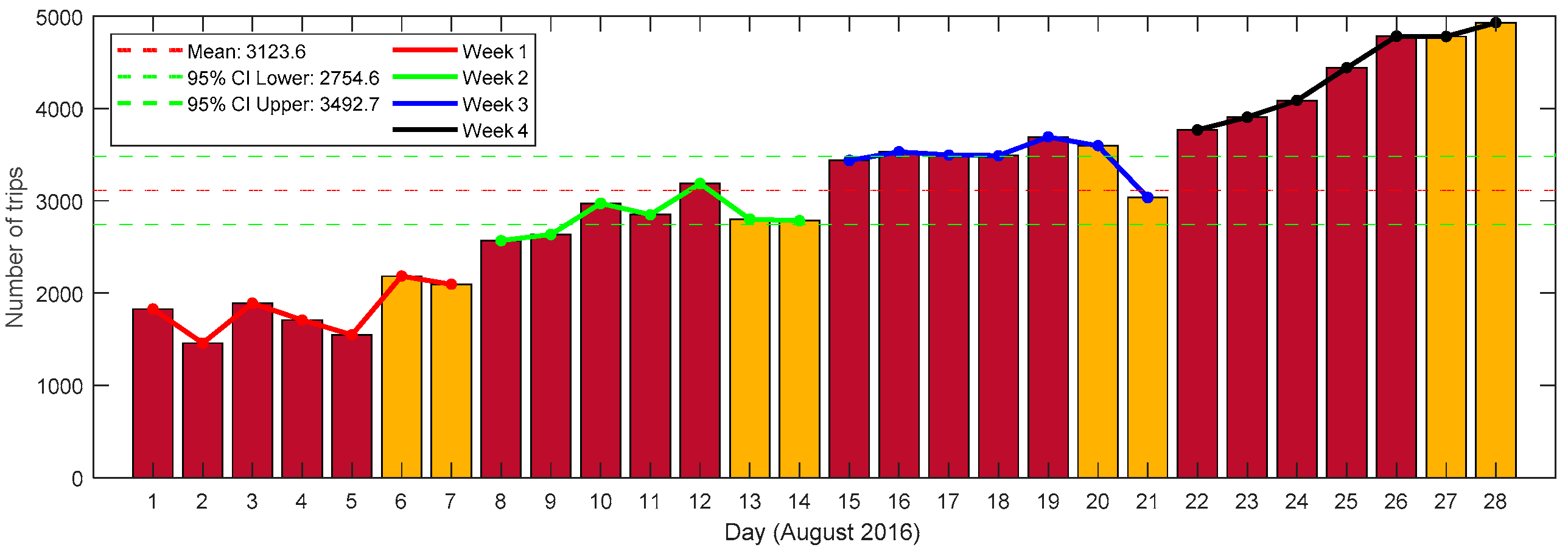
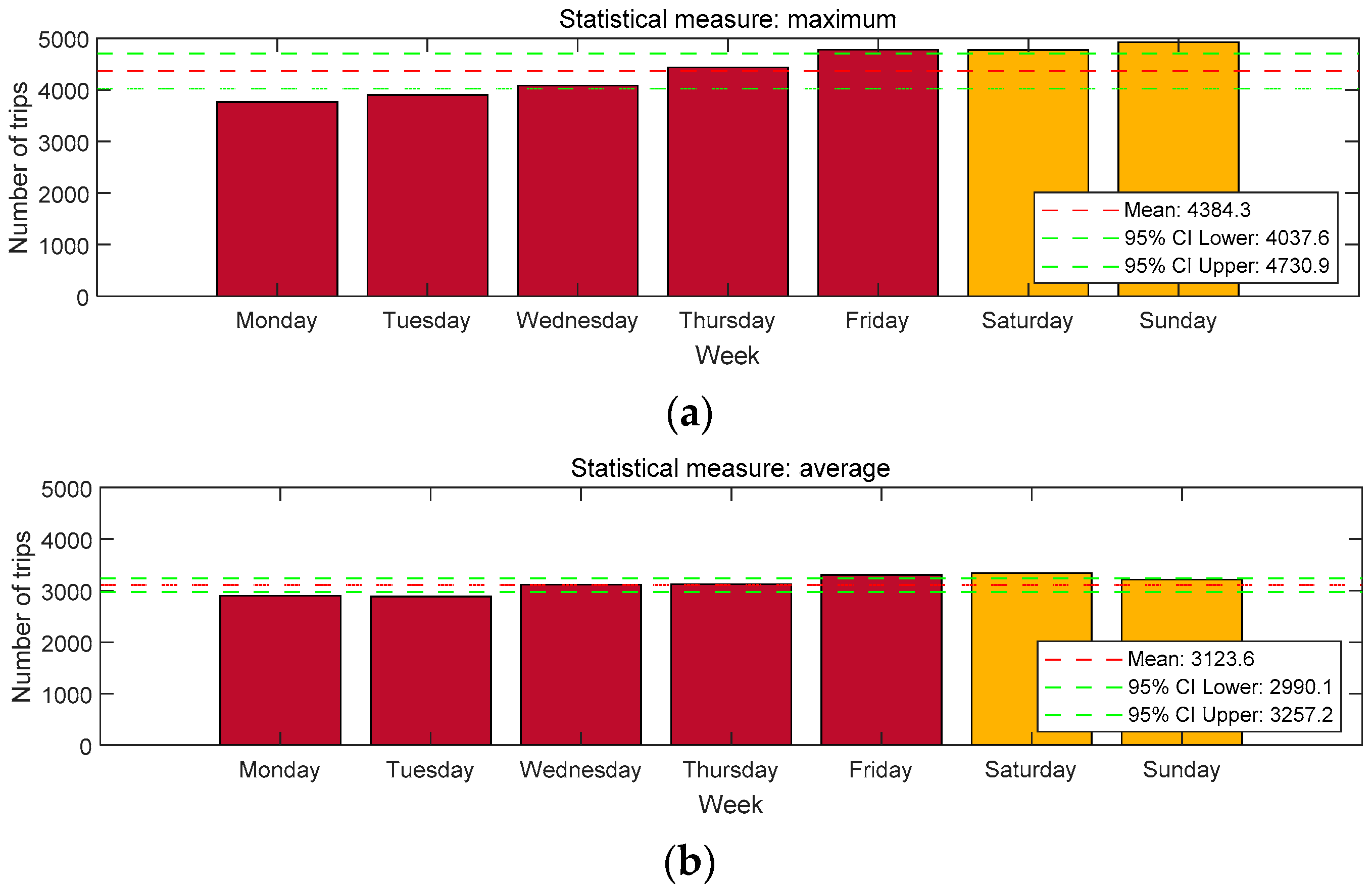

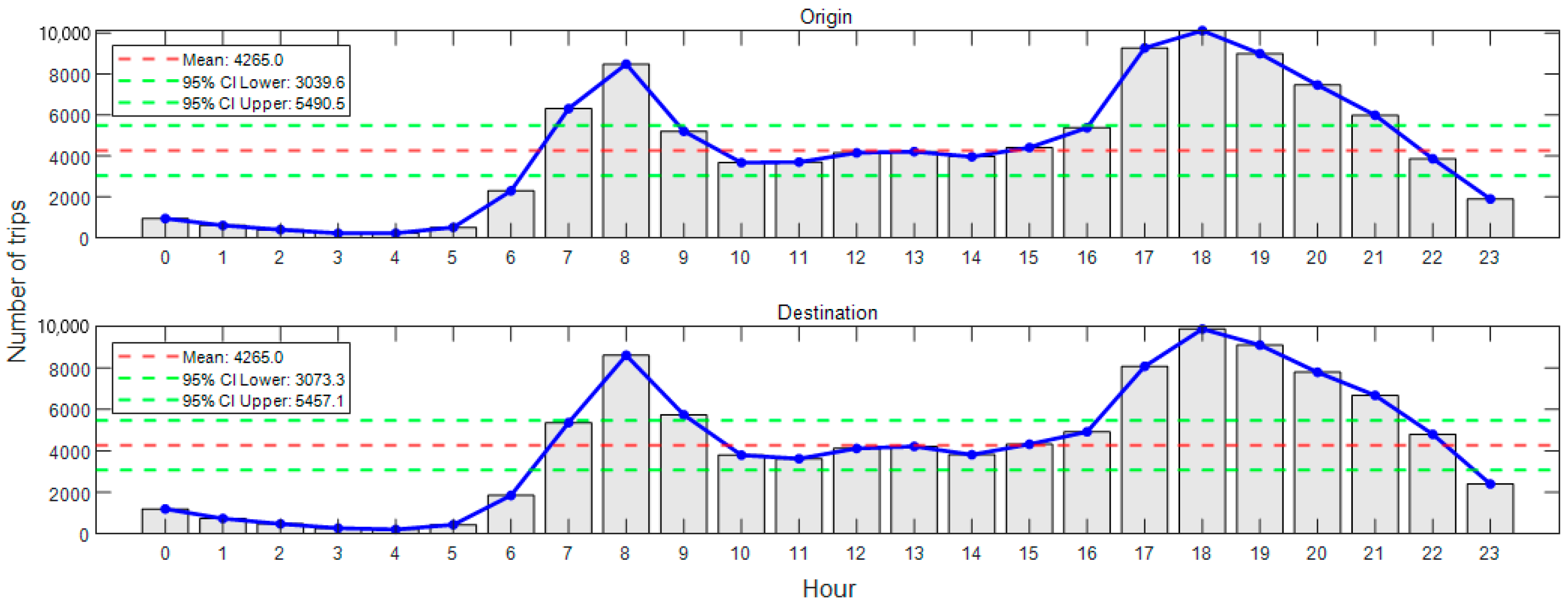
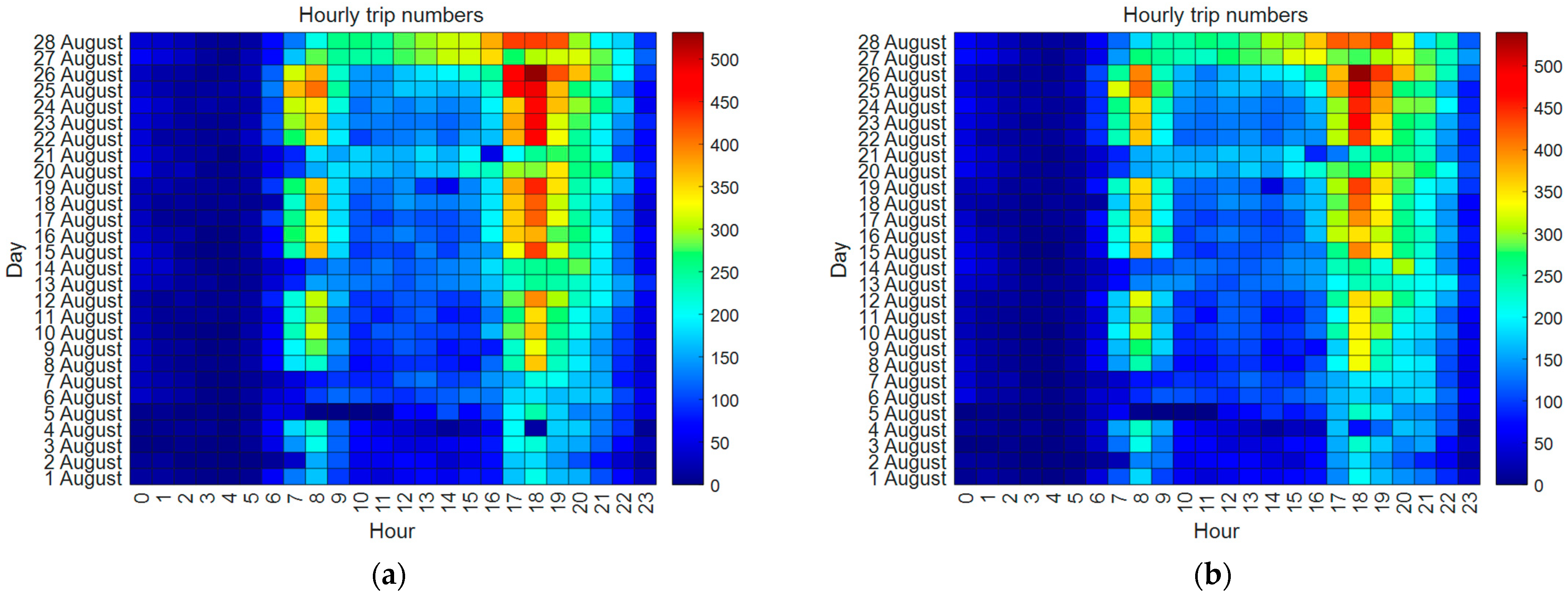


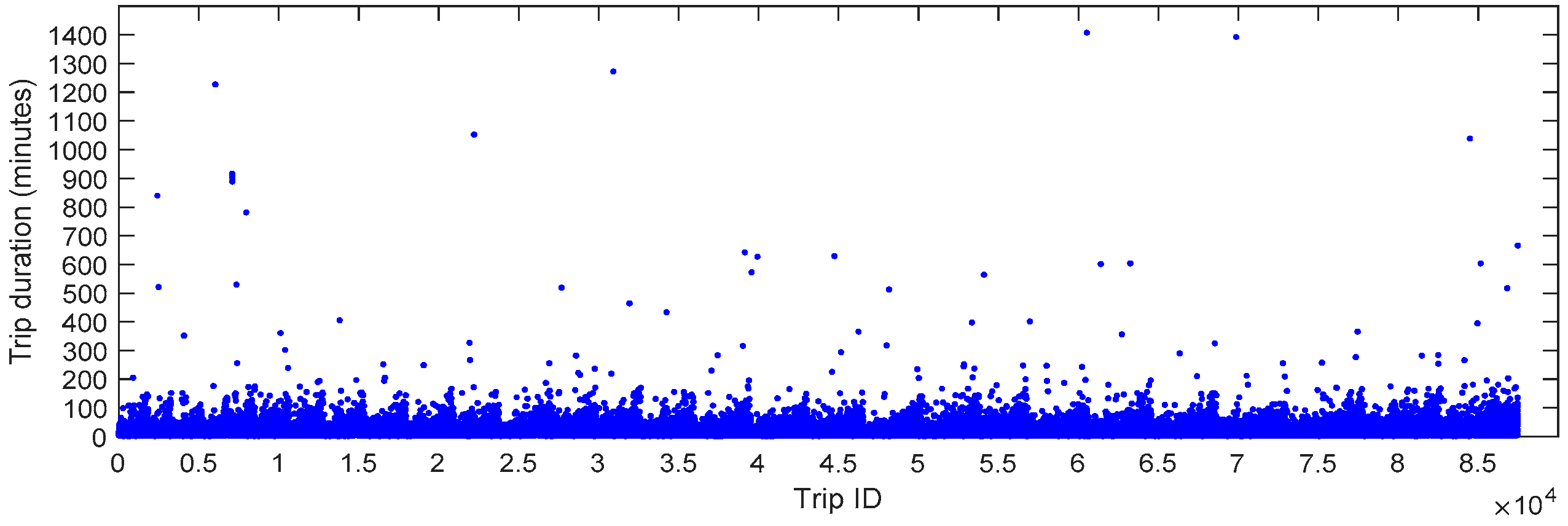



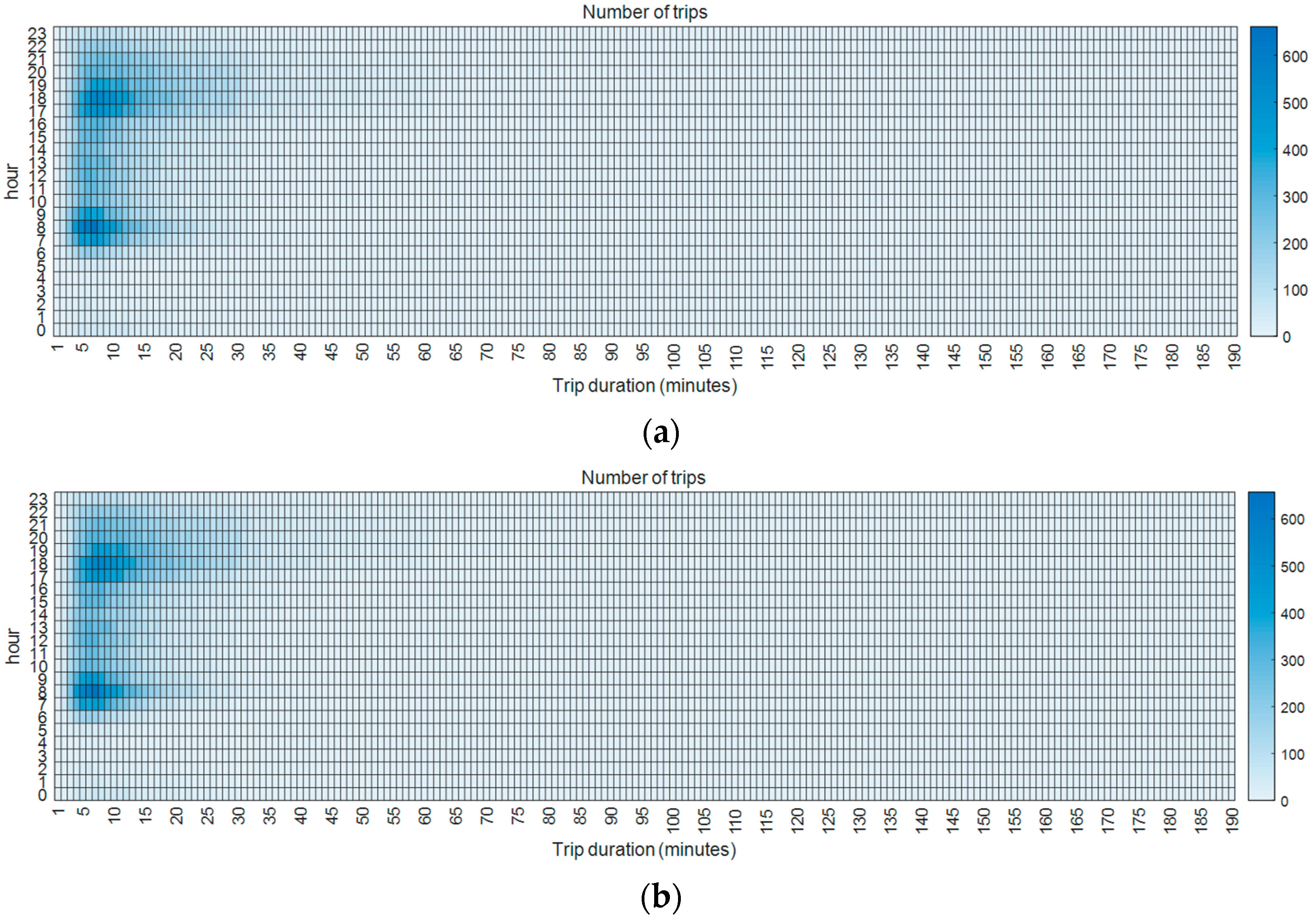





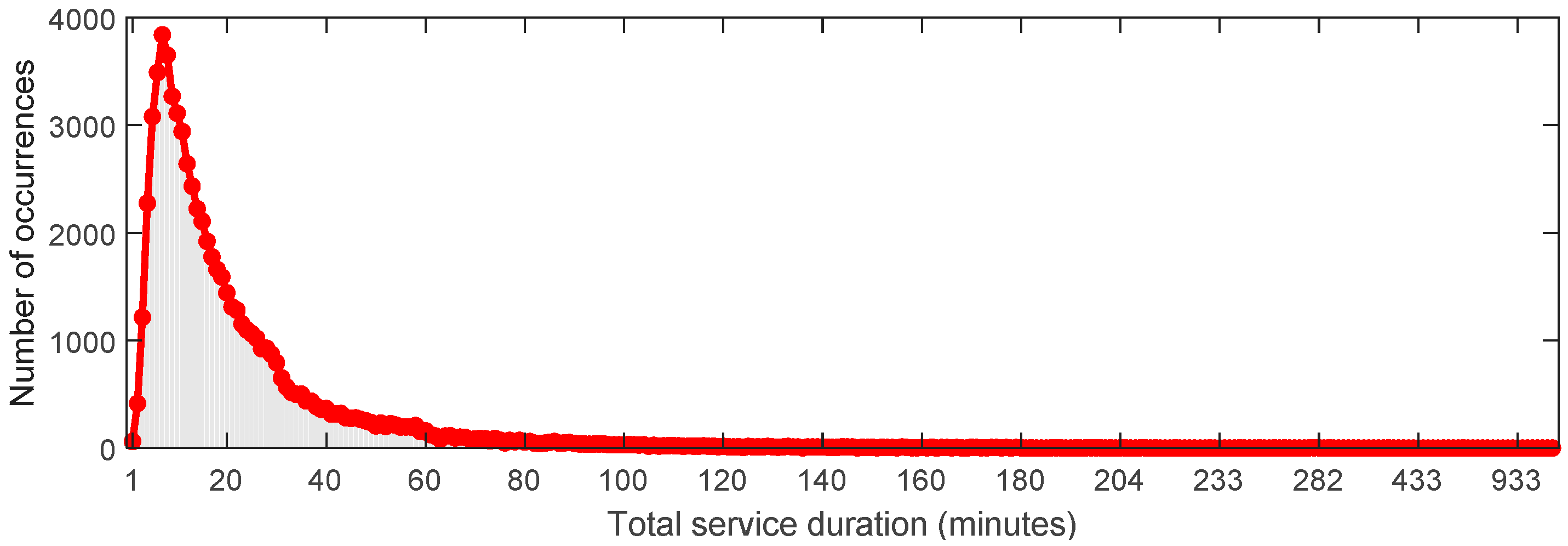
| Number of Utilizations | Number of Occurrences | Frequency | Cumulative Frequency |
|---|---|---|---|
| 1 | 54,511 | 0.79530 | 0.79530 |
| 2 | 10,571 | 0.15423 | 0.94953 |
| 3 | 2482 | 0.03621 | 0.98575 |
| 4 | 654 | 0.00954 | 0.99529 |
| 5 | 233 | 0.00340 | 0.99869 |
| 6 | 59 | 0.00086 | 0.99955 |
| 7 | 24 | 0.00035 | 0.99990 |
| 8 | 5 | 0.00007 | 0.99997 |
| 9 | 1 | 0.00001 | 0.99999 |
| 11 | 1 | 0.00001 | 1.00000 |
| Total Service Duration | Cumulative Frequency | Total Service Duration | Cumulative Frequency |
|---|---|---|---|
| 5 | 0.10279 | 65 | 0.95684 |
| 10 | 0.35604 | 70 | 0.96355 |
| 15 | 0.53616 | 75 | 0.96943 |
| 20 | 0.65858 | 80 | 0.97386 |
| 25 | 0.74477 | 85 | 0.97743 |
| 30 | 0.81089 | 90 | 0.98105 |
| 35 | 0.85083 | 95 | 0.98379 |
| 40 | 0.87982 | 100 | 0.98612 |
| 45 | 0.90183 | 105 | 0.98812 |
| 50 | 0.91993 | 110 | 0.98969 |
| 55 | 0.93556 | 115 | 0.99100 |
| 60 | 0.94888 | 120 | 0.99219 |
Disclaimer/Publisher’s Note: The statements, opinions and data contained in all publications are solely those of the individual author(s) and contributor(s) and not of MDPI and/or the editor(s). MDPI and/or the editor(s) disclaim responsibility for any injury to people or property resulting from any ideas, methods, instructions or products referred to in the content. |
© 2024 by the authors. Licensee MDPI, Basel, Switzerland. This article is an open access article distributed under the terms and conditions of the Creative Commons Attribution (CC BY) license (https://creativecommons.org/licenses/by/4.0/).
Share and Cite
Zhang, P.; Liu, M.; Xu, J.; Zhu, Z.; Cao, R. Characterizing Temporal Patterns of Intra-Urban Human Mobility in Bike-Sharing through Trip Analysis: A Case Study of Shanghai, China. Appl. Sci. 2024, 14, 8583. https://doi.org/10.3390/app14198583
Zhang P, Liu M, Xu J, Zhu Z, Cao R. Characterizing Temporal Patterns of Intra-Urban Human Mobility in Bike-Sharing through Trip Analysis: A Case Study of Shanghai, China. Applied Sciences. 2024; 14(19):8583. https://doi.org/10.3390/app14198583
Chicago/Turabian StyleZhang, Pengdong, Min Liu, Jinchao Xu, Zhibin Zhu, and Ruihan Cao. 2024. "Characterizing Temporal Patterns of Intra-Urban Human Mobility in Bike-Sharing through Trip Analysis: A Case Study of Shanghai, China" Applied Sciences 14, no. 19: 8583. https://doi.org/10.3390/app14198583
APA StyleZhang, P., Liu, M., Xu, J., Zhu, Z., & Cao, R. (2024). Characterizing Temporal Patterns of Intra-Urban Human Mobility in Bike-Sharing through Trip Analysis: A Case Study of Shanghai, China. Applied Sciences, 14(19), 8583. https://doi.org/10.3390/app14198583






